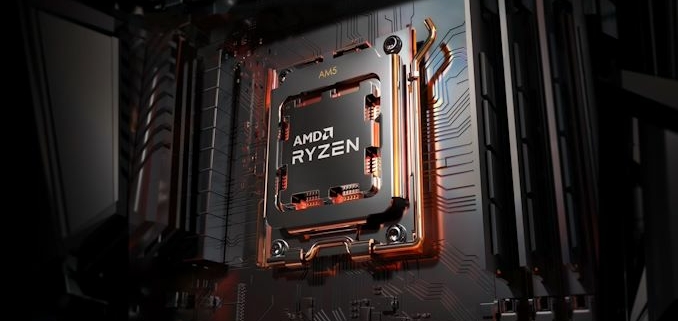AMD Corrects Socket AM5 Power Specifications: 170W TDP and 230W PPT
At Computex 2022, the CEO of AMD, Dr. Lisa Sui, unveiled its Ryzen 7000 series of processors, as well as the associated AM5 platform. But while discussing specific details about its new platform for Zen 4 and beyond, AMD inadvertently ended up creating a conflux of confusion around the AM5 platform by quoting different power figures to different groups. Ultimately, at different points AMD was quoting 170 Watts as both the highest nominal TDP supported by the platform, as well as the Power Package Tracking (PPT) rating, which is the absolute highest amount of power a chip can draw under load. It goes without saying that these two claims shouldn’t both be right, and a correction was needed.
As first reported by the Tom’s Hardware crew, AMD has published a statement addressing the confusion, and proving the correct values. In short, the 170 Watt TDP was correct. Meanwhile the PPT value is actually 230 Watts – which at 1.35x the TDP rating, is typical for AMD’s Ryzen processors.
AMD’s full statement is below:
This new TDP group will enable considerably more compute performance for high core count CPUs in heavy compute workloads, which will sit alongside the 65W and 105W TDP groups that Ryzen is known for today. AMD takes great pride in providing the enthusiast community with transparent and forthright product capabilities, and we want to take this opportunity to apologize for our error and any subsequent confusion we may have caused on this topic.
The overall increase in power specification figures for the AM5 platform was not unexpected – part of the benefit of the move to LGA sockets is additional pins for power delivery – but this finally settles the matter of just how much power AMD’s new socket and platform are designed to deliver. Motherboard vendors will no doubt go (well) past this on their high-end boards, of course, but 170W/230W will be the baseline for any motherboard that wants to officially support high-end AM5 chips.
CPU power consumption has been on the rise for the past several years, as we’re now well into the Dark Silicon era. While an individual CPU core still only draws a modest amount of power – on the order of 20W to 30W for a high-performance core – the total power requirement quickly balloons for high-end processors, which pack upwards of 16 cores. As a result, power delivery limits are typically the constraining factor for heavily multi-threaded workloads, as CPUs have to back down on clockspeeds in order to stay within their power envelopes. Increasing platform power limits, in turn, offers more headroom for keeping more cores clocked higher more often.
Though it should be noted that AMD’s clarifications today are for the AM5 socket, not the initial Ryzen 7000 series chips that will use it. AMD doesn’t necessarily have to tap into the full TDP of the socket right away – though for the aforementioned MT performance reasons, there’s good reason to. So officially, we still don’t know what the TDPs of the high-end Ryzen 7000 processors will be; but unofficially, it wouldn’t be surprising to see the top chips approach 170 Watts.
Read MoreAnandTech




